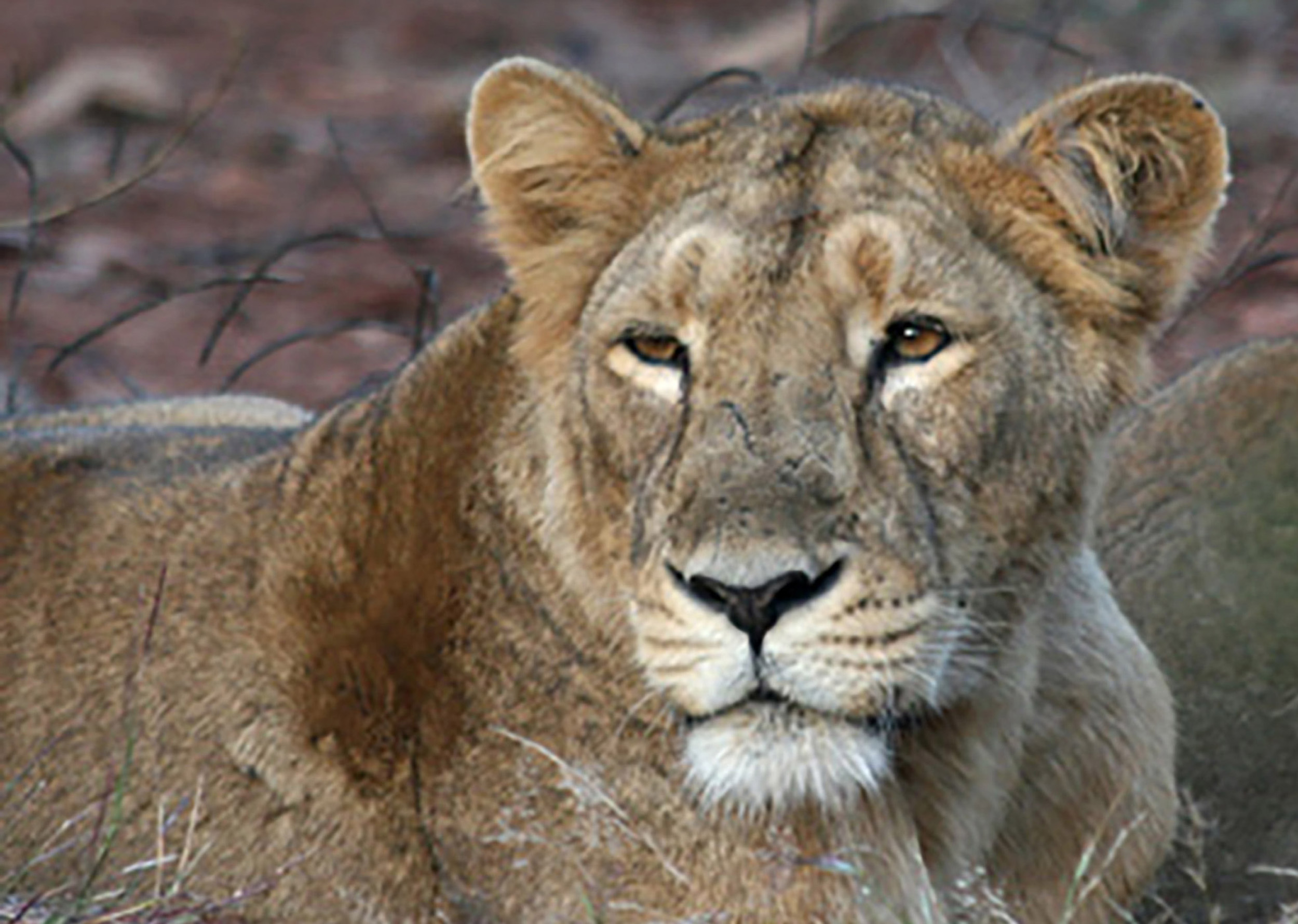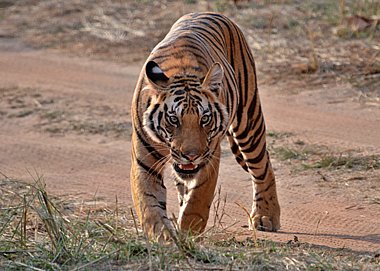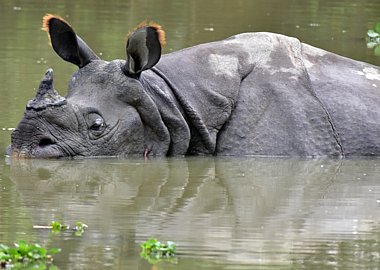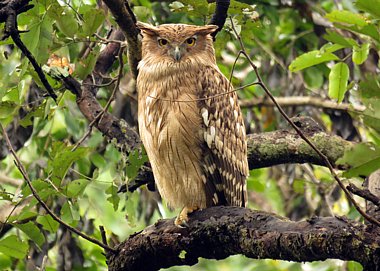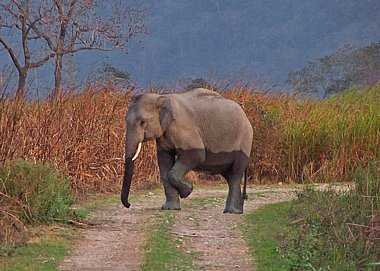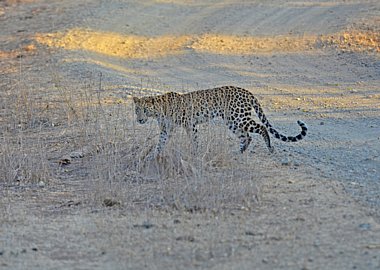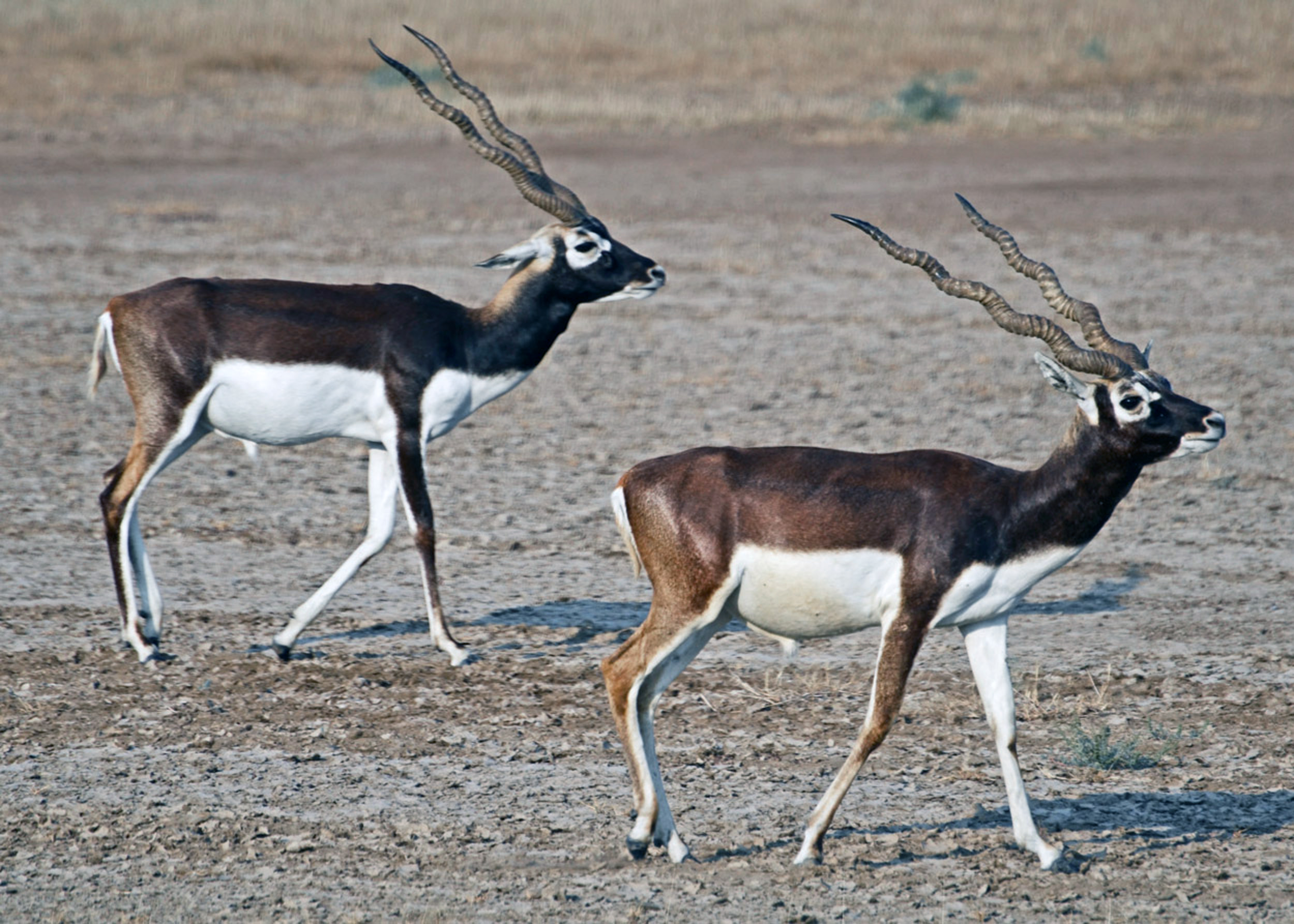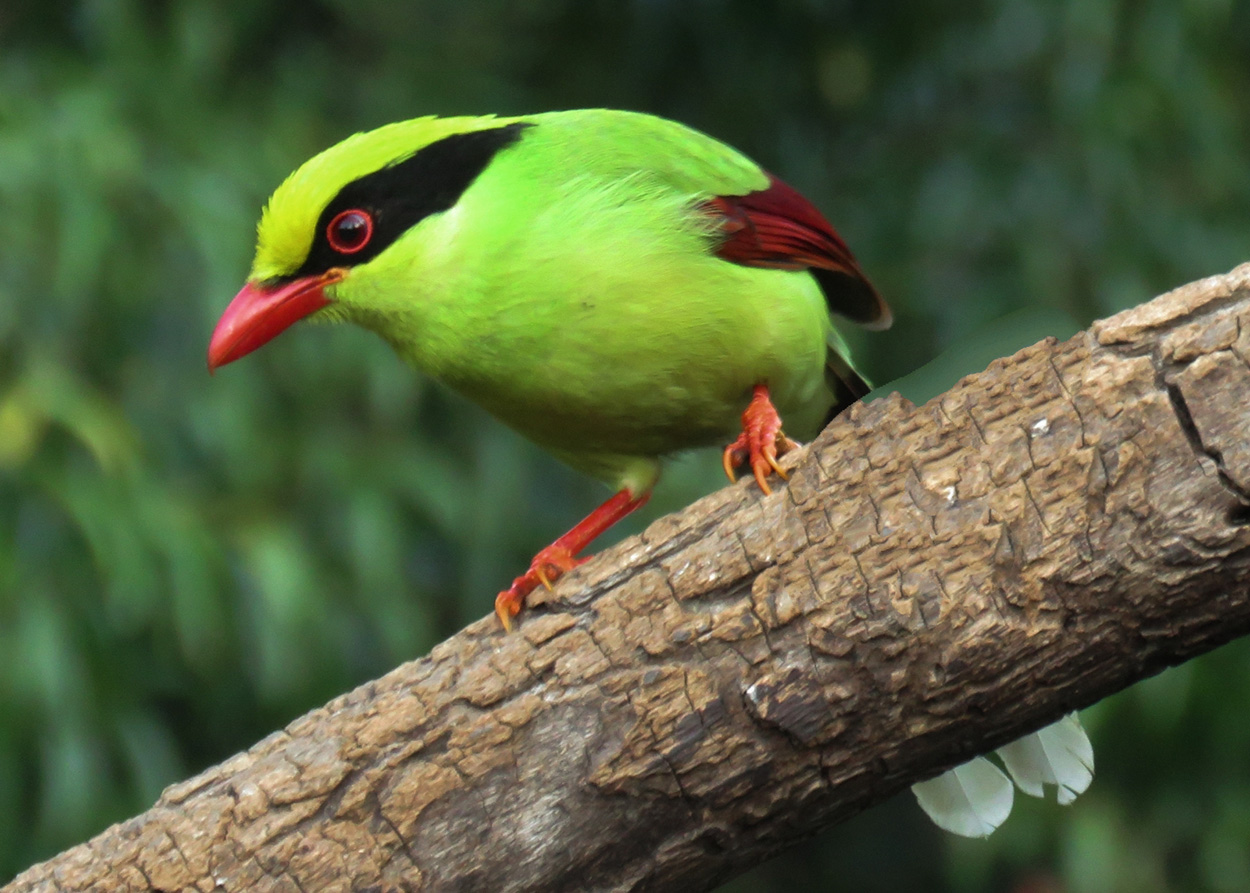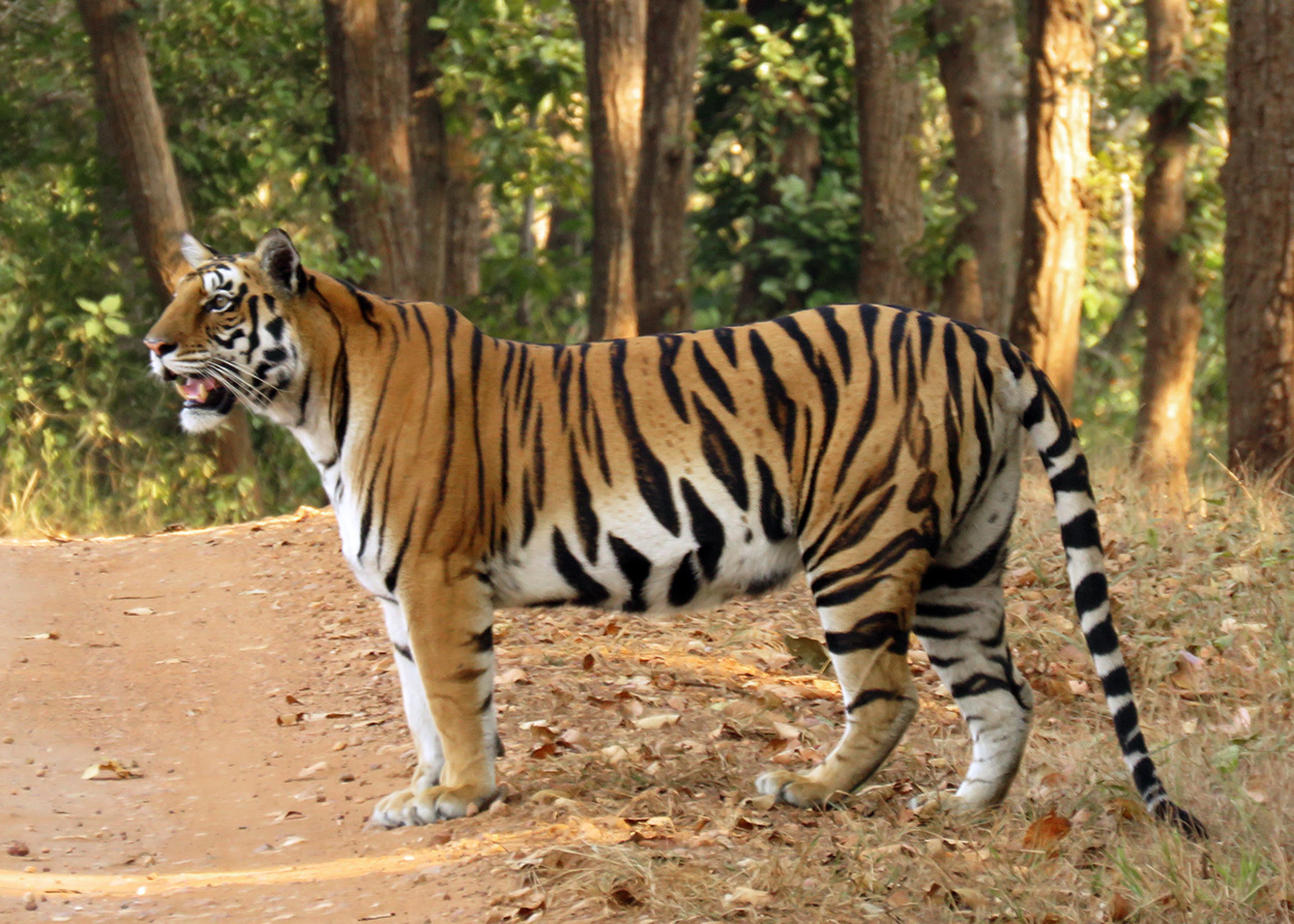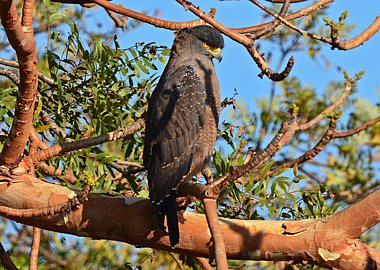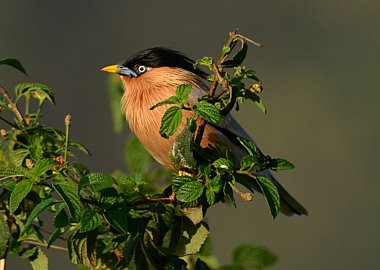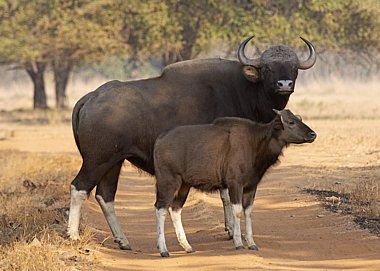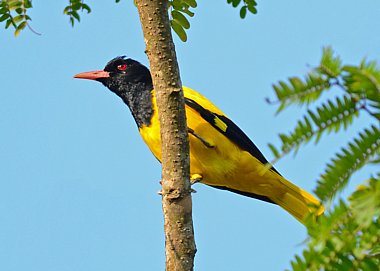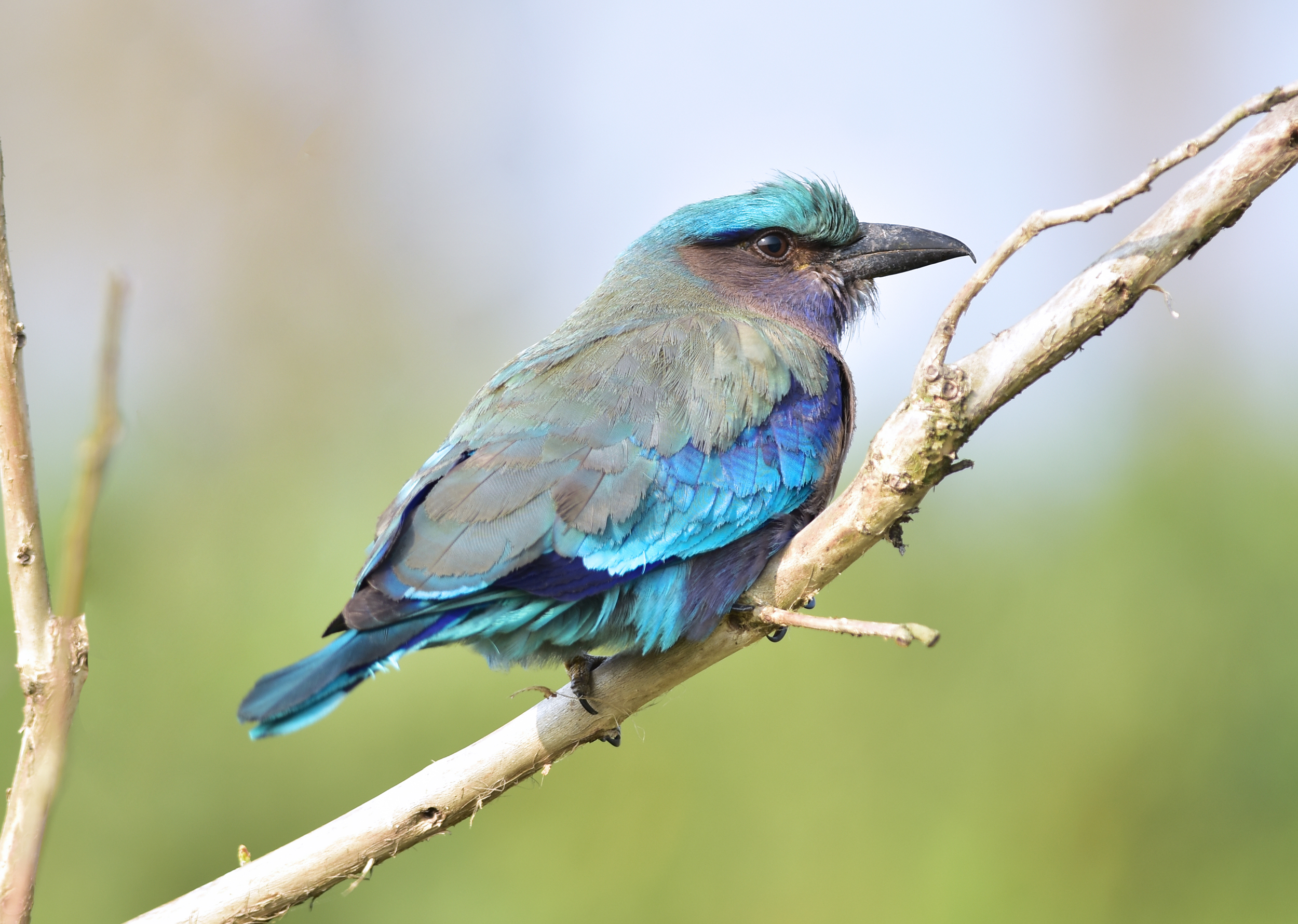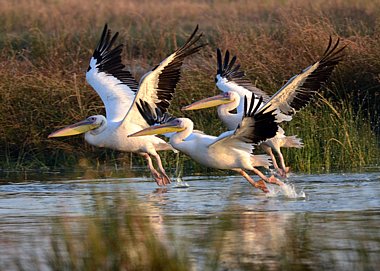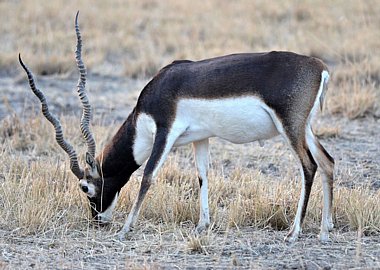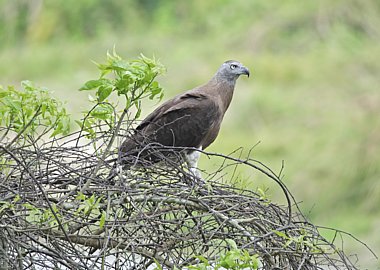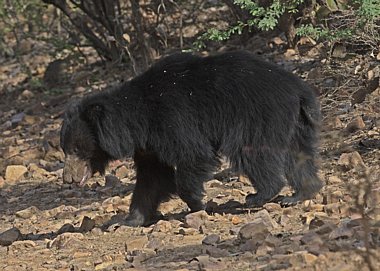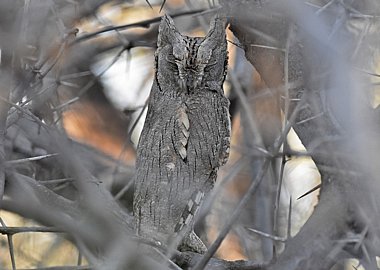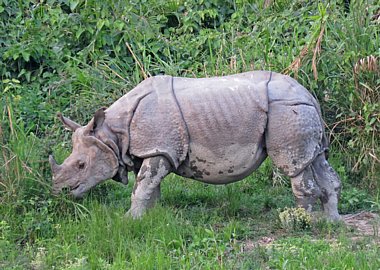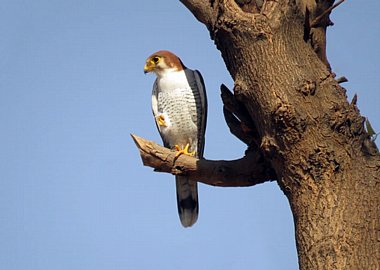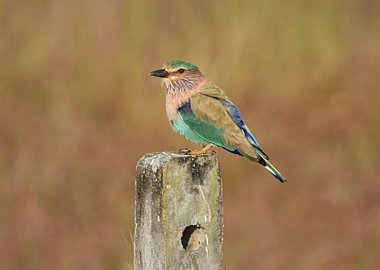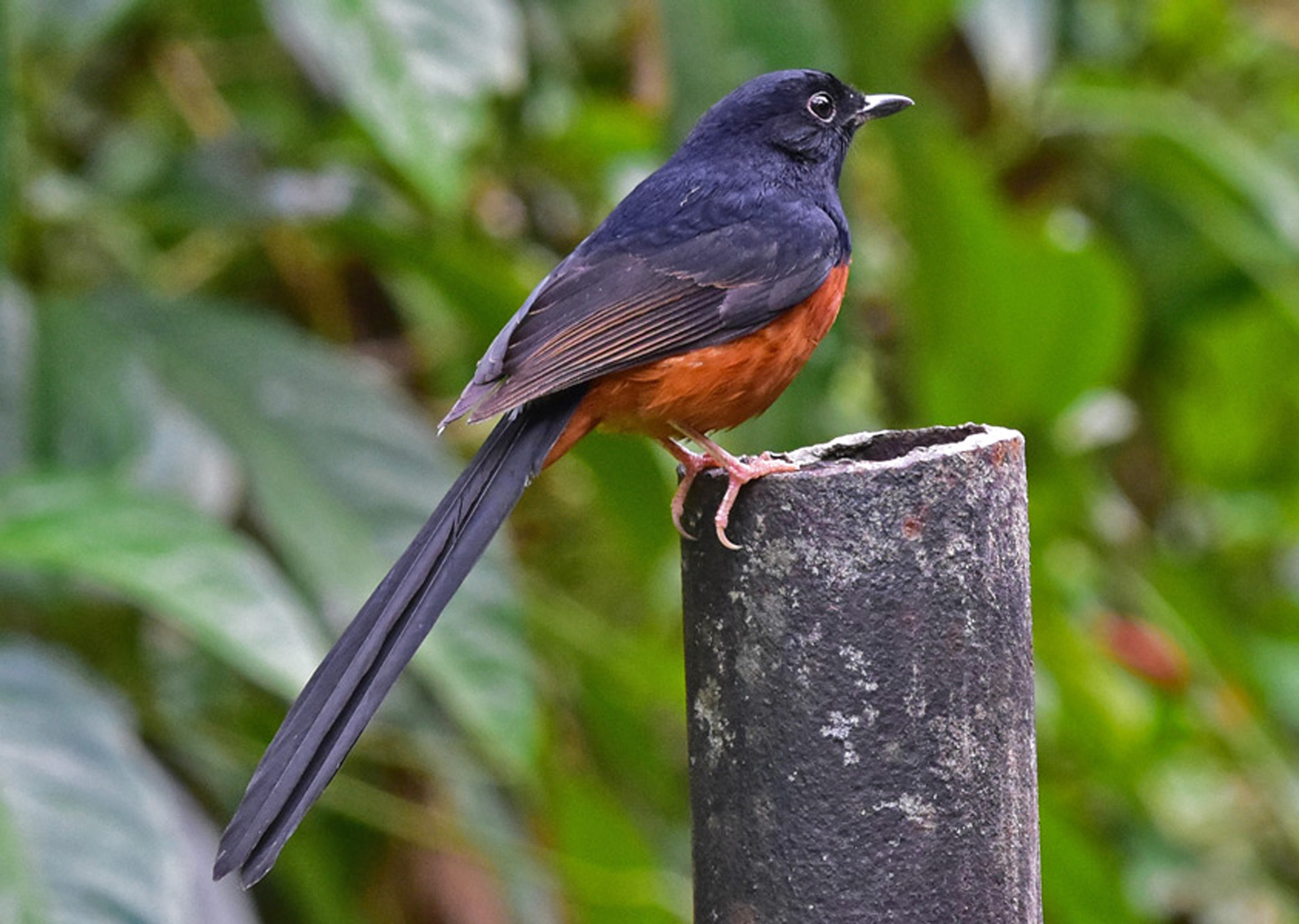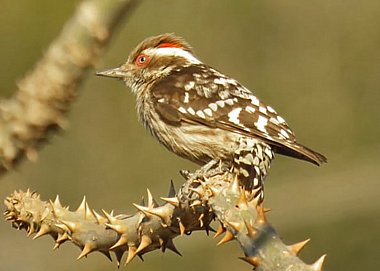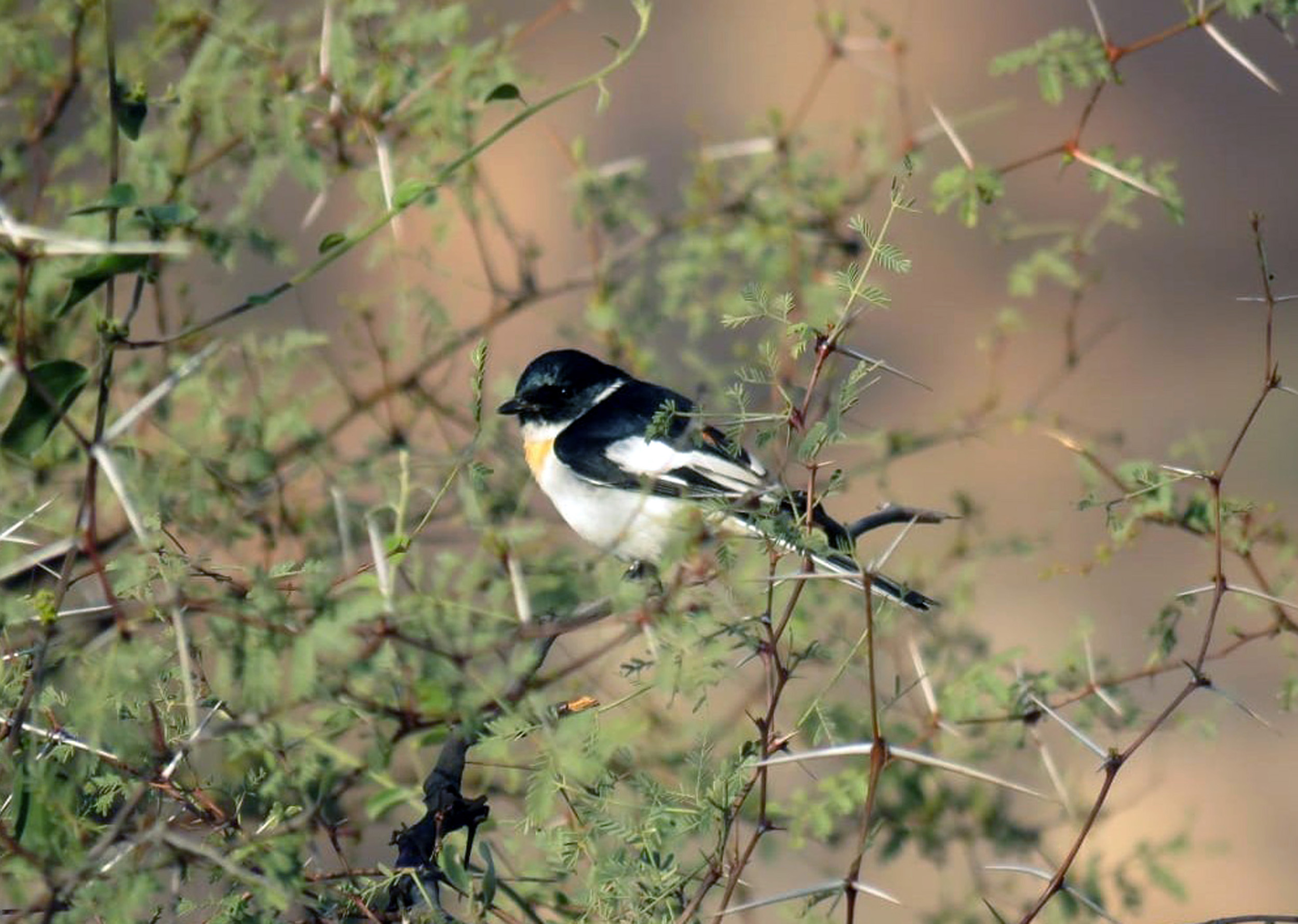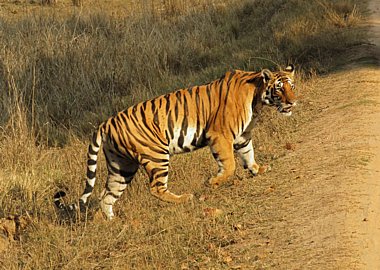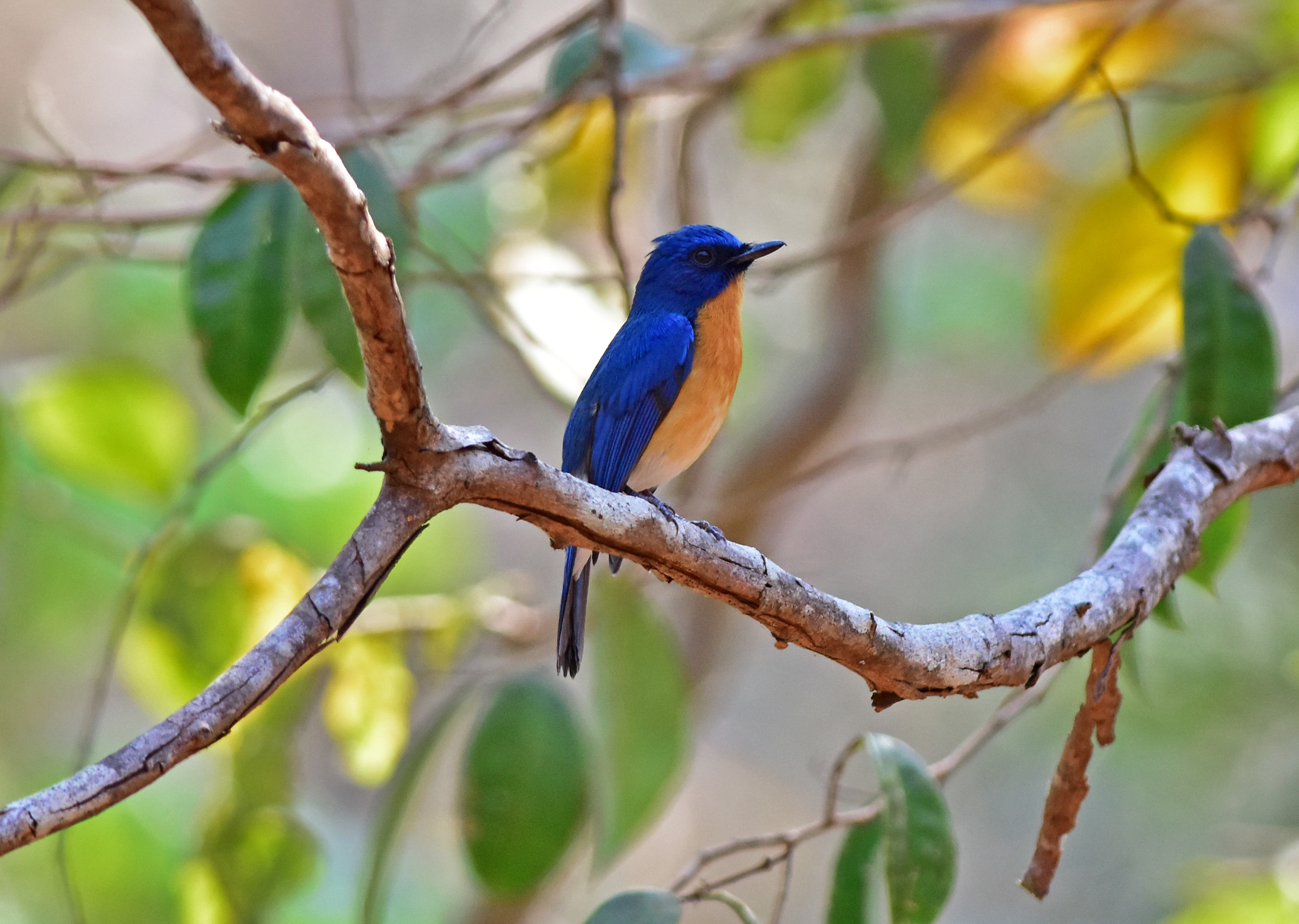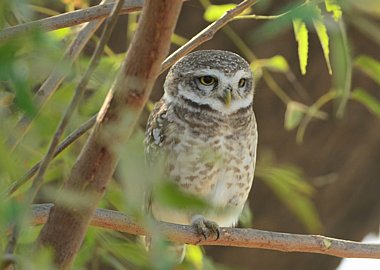NEW! India's Big Five
Rare Asian mammals and fabulous birding on the same holiday!
| Destination | |
|---|---|
| Focus | |
| 2026 Dates | |
| Duration | 16 Days |
| 2026 Price | £5995 pp £800 single supplement. Deposit £1200 pre-flight airport hotel and lounge are inc. |
| Max Group Size | 12 |
- Free Bird Guide
FREE copy of Birds of the Indian Subcontinent with every room booked on this holiday.
- Enquire
India is renowned for its tigers, but there is an incredible diversity of other mammals that occur throughout the country which is all too often overlooked. This exciting new tour offers a rare chance to see India’s ‘Big Five’, which besides Bengal Tiger includes Asiatic Lion, Leopard, Asian Elephant and Indian Rhinoceros. We cover a large area in search of these iconic large mammals and many more besides, taking in a host of spectacular birdlife as we travel around India.
Protection zones form an integral part of conserving many of India’s scarce mammals, and we divide our time between the Velvador, Gir, Tadoba and Kaziranga National Parks. Aswell as the ‘Big Five’, more elusive mammals we target include endemic Blackbuck, Sloth Bear, Jungle and Rusty-spotted Cat, Golden Jackal and the secretive Ratel. We make a special effort to look for Indian Wolf and Indian Rhinoceros, plus numerous others such as Striped Hyena, Golden Jackal, Guar, Indian Bison and the Eastern race of Swamp Deer.
And while there will be a strong focus on mammals during this tour, birding will certainly not be forgotten! A large bird-list is likely, and among the more difficult and sought after species we seek are endangered Greater Adjutant, Sarus and Demoiselle Crane, Crane, Chestnut-bellied Sandgrouse, Yellow-wattled Lapwing, Sirkeer Malkoha, Indochinese Roller, Bengal Florican and Pied Falconet.
Join us on this unique tour, combining rare and range restricted mammals with fabulous Asian birding across three distinct regions of India.
Enjoy your complimentary pre-flight overnight hotel before your holiday begins. Full details from our office! Read more about our Pre-flight Service here!
Day 1: Sat 14 February 2026 – London to India
After relaxing in our complimentary VIP Airport Lounge, we depart London on an overnight flight.
Day 2: Sun 15 February – Transfer to Gir National Park
Following our early-morning arrival in Ahmedabad, we meet with our local guide and transfer southwest through the state of Gujarat. Upon leaving the city, our journey takes us through a region of vast, flat drylands and we will find time for some roadside birding along the way. In a mixture of habitats from rice fields, acacia scrub and seasonal wetlands, early birds might include Indian Roller, Asian Green Bee-eater, Long-tailed Shrike, Pied Bushchat, Laughing Dove, Jungle Babbler, Greater Coucal, Wire-tailed and Asian Red-rumped Swallow, Grey Francolin, Red-wattled Lapwing and perhaps even Sarus Crane. We expect to arrive at Gir National Park by evening where we stay for the next three nights, resting up for the many wildlife filled days which await!
Day 3: Mon 16 February - Asiatic Lion and key mammals of Gir National Park
Dominated by teak, interspersed with grasslands and dissected by seven perennial rivers and four reservoirs, the woodlands of Gir support a diverse range of wildlife. We have two days to explore, the park undoubtedly best known for being the last refuge of Asiatic Lion - a highly endangered subspecies that is now found only in this small corner of Gujarat and the only place outside of Africa where lions may be seen. Our primary focus at Gir, in stark contrast to the cunning and elusive habits of India’s other big cat (Tiger), their bold and fearless nature makes Asiatic Lions relatively easy to see and we hope for some memorable encounters.
Taking morning and afternoon safaris in open-topped jeeps, we look out for (Asiatic) Leopard too, naturally taking an interest in the abundant herbivores upon which big cat’s prey with Wild Boar, Chital, Sambar, stately Nilgai, delicate Chinkara and secretive Chousingha among those featuring. We also have chances to see some of the park’s more elusive mammals such as Sloth Bear, Jungle and Rusty-spotted Cat, Golden Jackal and Indian Flying Fox. On the banks of the Kamleshwar reservoir, we should see Marsh Crocodile and Bengal Monitor, while Indian Star Tortoise may also be seen today.
Day 4: Tue 17 February – Birding in Gir National Park
While we are very likely to see mammals and birds on both days spent at Gir, we may choose focus on the latter today, especially if key mammals have already been seen. On safari through the dry forest, possibilities include Indian Paradise Flycatcher, Black-naped Monarch, Red-breasted, Verditer and Asian Brown Flycatcher, Grey-headed Canary-Flycatcher, Blue-cheeked Bee-eater, Black-hooded Oriole, Large and Black-headed Cuckoo-shrike, Brown-capped Pygmy Woodpecker, Black-rumped Flameback, Yellow-footed Green-Pigeon, White-bellied Minivet, Green Warbler, Rufous Treepie, Dusky Crag-Martin, Indian Peafowl, Jungle Bush-Quail, Barred Buttonquail, and Painted Francolin. Raptors including Indian Vulture, Changeable Hawk-Eagle, Crested Serpent-Eagle and White-eyed Buzzard are likely, and we look for Indian and Jungle Nightjar, Mottled Wood-Owl, Brown Fish-Owl and Spotted Owlet at their daytime roosts.
We also enjoy good birding in the grounds of our lodge between safaris, where scrub jungle hosts species such as Coppersmith Barbet, Tickell’s Blue Flycatcher, Common Tailorbird, Jungle Prinia, Indian White-eye, Asian Koel, Common Woodshrike and White-browed Fantail. Scanning the Hiran River, we may see Medium and Great Egret, Black-headed Ibis, White-breasted Waterhen, Ruddy-breasted Crake, Black-winged Stilt, River Tern, White-throated and Pied Kingfisher and River Tern.
Day 5: Wed 18 February – Transfer to Velavadar National Park
After breakfast we leave Gir, driving northeast to Velavadar National Park, arriving in time for lunch. Within a vast area of flat drylands, Velavadar is a valuable remnant of the tropical savannah habitat that once spread across the region. Reminiscent of the plains of Africa, we take our first open jeep safari into the reserve, hoping to come across some of the enigmatic birds and mammals inhabiting the region. Endemic Blackbuck thrive in these protected grasslands, herds of over a hundred individuals being a common sight here. Velavadar also hosts a sizeable harrier roost during the winter months, Montagu's, Pallid, Western Marsh and occasionally Hen Harrier returning to the sanctuary of the reserve each evening. We stay in Velavadar National Park for the next two nights.
Day 6: Thurs 19 February – Velavadar National Park
With a full day to explore the park, we make a special effort to look for Indian Wolf and Striped Hyena. Velavadar is among the best sites in India to see these two elusive species, an early morning safari giving us the best chance. An impressive diversity of birds may be found within the park boundaries, and characteristic of dry grassland habitats are Rufous-tailed, Tawny and Sykes’s Lark, Long-billed and Tawny Pipit, Indian Silverbill, White-eared Bulbul, Bay-backed and Isabelline Shrike, Booted and Sykes’s Warbler, Clamorous Reed-Warblers, Desert, Isabelline and occasional Variable Wheatear, Black Redstart and Bluethroat. Large concentrations of both Common and Demoiselle Crane, may watched passing noisily overhead at dawn and dusk too.
In the southern half of the park, tidal mudflats and freshwater wetlands support a greater variety of waterbirds and we look for Asian Woolly-necked and Painted Stork, Asian Openbill, Red-naped Ibis, Spotted Redshank, Marsh, Green and Wood Sandpiper, Little and Temminck’s Stint, Great White and Dalmatian Pelican, Western Reef-Heron, Small and Collared Pratincole, Oriental Darter, Indian Spot-billed, Knob-billed and Lesser Whistling-Duck, Grey-headed Swamphen, Whiskered and Gull-billed Tern, Pied Kingfisher and plenty more besides. Birds of prey can be numerous and include Egyptian Vulture, Long-legged Buzzard, Short-toed, Greater Spotted, Indian Spotted, Bonelli’s and Tawny Eagle, Red-necked Falco and Black-winged Kite. If lucky we may find Pallid Scops-Owl roosting in the trees that surround our lodge.
Day 7: Fri 20 February – Transfer to Nagpur
Mainly a travel day, we have time for a final morning safari at Velavadar before we leave prioritising elusive mammals such as Indian Wolf and Striped Hyena. Having grown familiar with the park’s commoner species, we can search for more difficult birds including Chestnut-bellied Sandgrouse, Yellow-wattled Lapwing, Sirkeer Malkoha, Paddyfield and Eastern Orphean Warbler, Delicate and Rufous-fronted Prinia, Red Avadavat, and Grey-necked Bunting. We then drive back to Ahmedabad in the afternoon, taking an evening flight to the central Indian city of Nagpur where we stay overnight in comfortable hotel nearby.
Day 8: Sat 21 February - Deccan Plateau and Tadoba National Park
Driving and birding our way south into the Deccan Plateau of Maharashtra state, possibilities include Black Kite Oriental Magpie-Robin, Scaly-breasted Munia, Spotted Dove, Rose-ringed and Plum-headed Parakeet, Asian Green Bee-eater, Large Grey Babbler, Indian Pied Starling, Brown Rock Chat, Black Drongo and Large-billed Crow. We anticipate arriving at Tadoba National Park for lunch, with time to settle in to our comfortable lodge where we will stay for the next three nights and spend some time birding in the grasslands and open woodland of the extensive grounds. Taking our first jeep safari into the reserve, we might even get lucky and see our first tiger this afternoon too!
Day 9: Sun 22 February - Bengal Tigers and other wildlife in Tadoba National Park
We have two full days to explore Tadoba National Park, focussing our attention on the quieter areas of the reserve where we are most likely to find Bengal Tiger. Planning our safari schedule to offer the best possible chance of an encounter with this magnificent big cat, the National Park is known for its charismatic and confident tigers so we have a good chance. Besides the tigers, the list of other potential mammals here is an impressive one. A reliable site for roaming packs of Ussuri Dhole, we also hope to track down Indian Bison, Guar with second chances for a number of Gujarat targets including Sloth Bear, Leopard and Jungle Cat. We also hope to encounter Rhesus Macaque, Northern Plains Grey Langur, Small Indian and Common Palm Civet and Ruddy Mongoose during our time here.
Day 10: Mon 23 February – Todoba National Park
Tadoba is one of India's most interesting reserves, its rugged hills draped in tropical dry forests of Teak, Silk Cotton and Flame-of-the-Forest that are peppered with bamboo, open meadows, marshes, perennial lakes and seasonal streams. The varied habitats here host a diverse selection of birds, and in between searching for tigers we will encounter many avian species, new to the tour. These may include, Indian Thick-knee, Red and Painted Spurfowl, Painted Francolin, Grey Junglefowl, Grey-headed Fish-Eagle, Crested Serpent-Eagle, Shikra, Oriental Honey-buzzard, Jungle Owlet, Crested Tree-swift, Indian Grey and Malabar Pied Hornbill, Orange-headed Thrush, White-bellied and Greater Racket-tailed Drongo, Common Hawk-Cuckoo, White-rumped Shama, Indian Golden Oriole, Alexandrine Parakeet, White-browed Bulbul, Brown-headed Barbet, Brahminy Starling, Brown Shrike, Purple and Purple-rumped Sunbird, Sulphur-bellied Warbler, Scaly-breasted and Tricoloured Munia, Ashy Prinia and Indian Bushlark.
Day 11: Tue 24 February – Nagpur and fly to Delhi
We have time for a final safari in Tadoba, prioritising any unseen mammals or improved views of species such as Bengal Tiger, Striped Hyena, Chousingha, Mouse Deer or Ratel. After lunch at our lodge, we will need to drive back to Nagpur taking an evening flight from here to Delhi where we stay overnight at an airport hotel in preparation for the next leg of our tour.
Day 12: Wed 25 February - Fly to Guwahati and drive on to Kaziranga National Park
After an early breakfast, we transfer to the airport for our morning flight to Guwahati in northeast India’s Assam state. On arrival, we spend some time on the edge of the city searching for critically endangered Greater Adjutant, which is now restricted almost entirely to the lowlands of Assam. In the afternoon, we drive northeast through the plains of the Brahmaputra Valley to Kaziranga National Park. In habitats differing from those on tour so far, we make birding stops along the way at suitable gardens, parks and wetlands where we can target new species including Indochinese Roller, Stork-billed Kingfisher, Great Myna, Blue-throated Barbet and Scarlet-backed Flowerpecker. We arrive at Kaziranga in the evening, staying here for three nights.
Day 13: Thurs 26 February - Kaziranga NP – grasslands and wetlands
Kaziranga is the largest undisturbed area of the Brahmaputra floodplain. Its landscape is dominated by vast marshy wetlands, extensive flats covered with tall elephant grass, and open foraging grounds that support large mammals in spectacular abundance. From our open topped jeeps, we look out for Indian Rhinoceros and the eastern race of Swamp Deer (Barasingha), the park supporting almost three-quarters of the remaining global populations of both! In open ground, especially close to water we are also likely to see Asian Elephant and Asiatic Wild Buffalo and smaller mammals such as Indian Hog Deer, Indian Grey and Small Indian Mongoose.
Birding is also excellent throughout the park. Raptors can be prominent and we watch for Slender-billed, Red-headed and White-rumped Vulture, Himalayan and Eurasian Griffon near recent mammal kills, as well as Imperial Eagle, and the tiny but fierce Pied Falconet. Day roosting Asian Barred Owlet and Dusky Eagle-Owl may also be encountered. Wetland areas are always productive, and we may see River Otter and can expect a wide variety of waders and waterfowl including Bar-headed Goose, Indian and occasional Eastern Spot-billed Ducks, Ferruginous Duck, Lesser Adjutant, Black-necked and Painted Stork, Asian Openbill, Spot-billed Pelican, Palla’s Fish-Eagle, Greater Painted-snipe, Marsh Sandpiper, River and Grey-headed Lapwing and Pheasant-tailed Jacana. In the surrounding grasslands we will look for Striated and Indian Grassbird, Black-breasted, Baya and Finn’s Weaver, Swamp Francolin and Rosy Pipit, with a slim chance of elusive Bengal Florican.
Day 14: Fri 27 February - Kaziranga NP – scrub and woodland habitats
There are tigers in Kaziranga too, and the following the network of jeep tracks through patches of woodland and cane thickets on the fringes of the floodplain grasslands we keep a sharp watch. Common Palm Civet, Assam Macaque and Capped Langur may be encountered in these habitats, as can other mammals seeking shade from the heat of the sun. The National Park supports and impressively diverse range of bird species, and new in these areas might be Ruby-cheeked Sunbird, Fire-breasted Flowerpecker, Streaked Spiderhunter, Dark-necked Tailorbird, Himalayan Rubythroat, Striated and Chestnut-capped Babbler, Blue-bearded Bee-eater, Long-tailed and Short-billed Minivet, Golden-fronted and Blue-winged Leafbird, Pin-tailed, Ashy-headed and Thick-billed Green-Pigeon, Red-breasted and Blossom-headed Parakeet, Grey-headed Woodpecker, Green-billed and Blue-faced Malkoha, Hair-crested Drongo, Common Hill Myna, Oriental Turtle-Dove, Asian Emerald Dove, Oriental Pied and Great Hornbill and Red Junglefowl. It might be our last full day, but new species are still very likely!
Day 15: Sat 28 February - Kaziranga to Guwahati and return flight to Delhi
We will have a few hours free this morning, and depending upon flight schedules might visit nearby tea estates to look for Common Green Magpie, Maroon Oriole, Lesser Necklaced and Greater Necklaced Laughingthrush, Lineated, Great and Blue-eared Barbet and Siberian Rubythroat. Leaving Kaziranga late morning, we drive back to Guwahati for an afternoon flight to Delhi, arriving at our airport hotel for a late dinner.
Day 16: Sun 1 March – Departure from Delhi to London
We depart on our international flight this morning, arriving in London on the same day.
Please note: all itineraries are given as a guide only. Actual holiday content may vary according to the judgement of your guide, and elements beyond our control (eg weather).
What's included in your holiday price:
- scheduled flights from London – Ahmedabad and then return from Delhi to London. All domestic flights within India, airport taxes, baggage and hand luggage up to airline included limit.
- airport transfers, ground transportation, accommodation and meals as specified.
- the services of a Heatherlea leader, plus local expert guide.
- all entrance fees to National Parks
- The Heatherlea Pre-Flight Service offers everything you need at the airport, including hotels, car parking, airport lounges, regional flights, and upgrades. Let Heatherlea take the strain! Pre-flight airport hotel and lounge included free of charge subject to terms and conditions. Read more...
- Free Field Guide! - Helm Guide - Birds of the Indian Subcontinent by Richard Grimmett, Carol Inskipp and Tim Inskipp. (one guide per booking).
What's not included in your holiday price:
- travel insurance
- Indian visa costs
- drinks & other personal expenses, laundry fees
- video camera fees, incidental tips to porters, naturalists, drivers and others.
Your Leaders:
Leio De Souza is widely acknowledged as one of the best wildlife tour leaders in India, with many years experience of guiding here for Heatherlea. Leio's extensive knowledge of Indian natural history, his infectious enthusiasm and an easy rapport with our clients make him the ideal leader for this new tour.
More Holiday Information:
Accommodation: We stay at comfortable hotels and lodges throughout. All rooms have private facilities. All meals are included (three meals per day). Food is often of 'international' style, though please let us know if you can't eat Indian food. Smoking is not allowed in restaurants and other public places.
Walking: Easy throughout, almost all bird and mammal-watching away from the lodges is done by open-topped jeep.
Weather: Typically fine and sunny, with temperatures in the region of 15 - 32°C. Nights can be cool, perhaps below 10°C, so bring warm clothing (jacket, hat, scarf) to wear especially during morning drives, which are in open-topped jeeps. Rainfall is scarce outside of the monsoon season and showers are unlikely to be prolonged.
Insects: There are biting insects including mosquitoes. Before travelling consult your doctor about suitable anti-malarial medication, and on arrival take adequate precautions against mosquito bites.
Visa: United Kingdom citizens will need a passport valid for at least six months from date of departure and a tourist visa to enter India. Most visitors are able to apply for an e-Tourist Visa online.
Flights: Scheduled flights are from London to Ahmedabad and then returning from Delhi to London. There are four domestic internal flights, which are important in getting us to the right areas for target species as quickly as possible.
Ground Transport: By coach, and 4WD vehicles inside the National Parks.
Photos: Excellent photographic opportunities for birds and mammals.
Also included: Entrance fees at national parks and monuments, sightseeing excursions as per itinerary, main hotel tips and airport taxes, bird and mammal checklist, and services of experienced Heatherlea Leader and local naturalist guides and drivers.
Other birding and wildlife holidays in India
Why choose Heatherlea for your birding and wildlife holiday?
Our overseas holidays are planned with care to offer great birding and wildlife, led by capable Leaders who really look after you. Every holiday is run the 'Heatherlea Way', and we hope our Overseas Adventures remind you of the quality and care so many of you enjoy in Scotland. That means rewarding and exciting days in the field, and good quality accommodation and meals, with a real flavour of the country we are visiting. Heatherlea always seek to include the personal touches that make all the difference.
Heatherlea holidays are not ‘dawn to dusk’ expeditions. Our less-intensive approach is ideal for those who want to relax whilst experiencing the best wildlife watching, and wherever possible we organise early or late activity on an optional basis. We also take sensible breaks when in very hot places and regular comfort breaks on every holiday whenever possible. All itineraries are planned carefully around the best wildlife opportunities, and you won’t miss out on memorable wildlife, whilst enjoying relaxed, informal days that are great fun.
The really important part of any wildlife holiday is the experience for you, our valued customer. Heatherlea invest in many things to offer you the best possible service;
- We have been organising birding and wildlife holidays for over 30 seasons, and have a highly experienced and capable office team. We also offer a telephone and email service outside normal office hours.
- Heatherlea overseas holidays have a maximum of 12 clients per trip, putting the emphasis on personal service, and helping you get the best possible experience.
- Our holidays often include things which others might invite you to pay yourself, for instance Departure Taxes and tips to hotels.
- All elements of our holidays are sold under our own licence, ATOL 6113. Under ‘Flight-Plus’ legislation it is a legal requirement of any tour operator to hold an ATOL licence for the supply of any overseas holiday where a flight is involved, if that holiday includes either overseas accommodation and/or car hire. It can be a criminal offence for an operator to book flights as part of a package without an ATOL licence. Heatherlea also hold full Tour Operator Insurance for your added protection.
- Heatherlea is your complete wildlife holiday provider. Our ‘Back Office’ team can organise all your pre-flight and other travel needs. Our specialists will help you book the right services, at the best price. Book holiday extensions through us, and your ATOL protection is extended further. We don’t charge extra for this service.
- Heatherlea is a limited company, registered in Scotland, and registered to pay VAT (applies to all holidays within the European Union).
Trip Reports
Coming Soon
- Free Bird Guide
FREE copy of Birds of the Indian Subcontinent with every room booked on this holiday.
- Enquire


